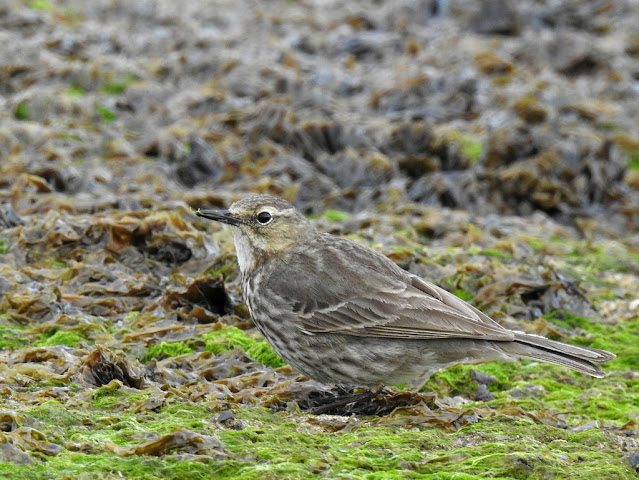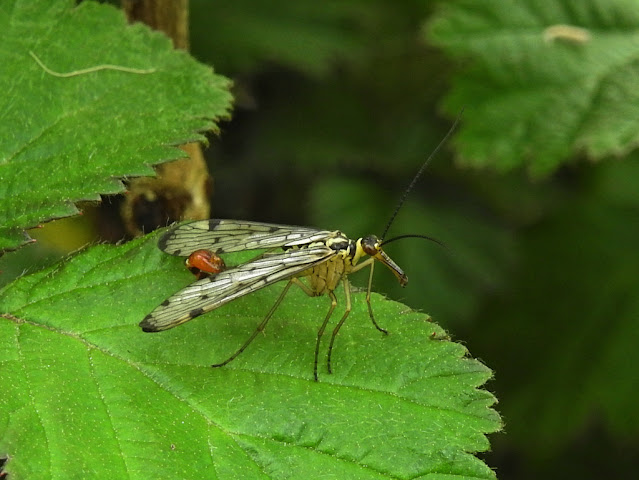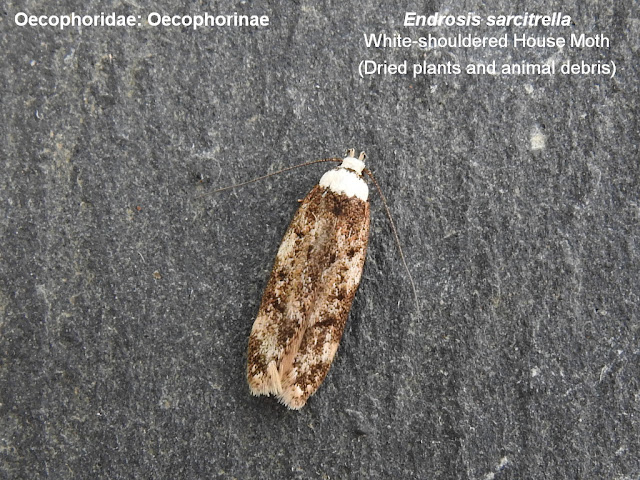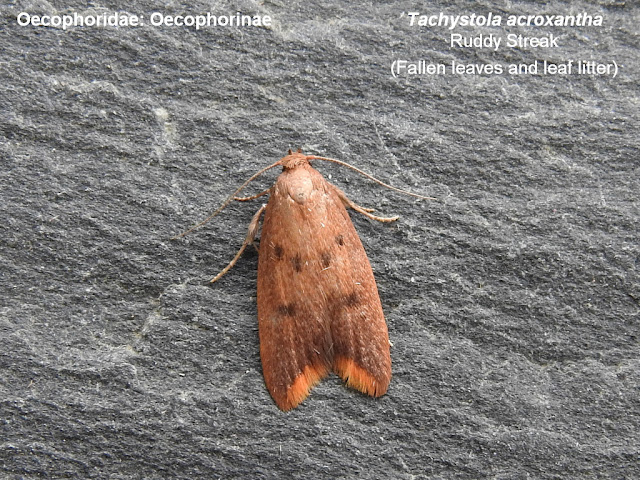I've just had a trawl through my old seawatching records and discovered two 400+ counts of Manx Shearwaters from Seaton. Both on 19th May (2006 and 2009) and both amassed over several hours; the higher count was 492 in 2006. I was pretty sure my Manx tally from West Bay on Tuesday evening was a personal record, but didn't appreciate it was more than twice my previous best Lyme Bay count! Between 17:00 and 18:35 I counted 1,005 Manxies past, all east bar five. A very unexpected passage in the modest NW and rain. And they were still going by when I packed up.
Briefly I must revisit the lovely Lesser Black-backed Gull which featured in Saturday's post, i.e., this bird...

|
|
LBBG L. f. intermedius |
In addition to Thomas Miller's observations I have had some fantastic feedback on this beauty from Mark Golley, a fellow gull nut in Norfolk but far more knowledgeable than me. Hopefully Mark won't mind me quoting from his illuminating comments...
As you've already concluded, the bird appears not to have a moult contrast in the primaries (they're all 2nd generation, though the presence of tiny white mirrors in both p10s is a bit of a curious one). There is a moult contrast in the secondaries (the innermost appear to be 3rd generation). This is at odds with fuscus at this time of year. Again, as you know, fuscus should have a moult contrast in the primaries and not the secondaries. The corresponding coverts are quite worn and brown. The tail is ok for fuscus as is the (arguably chunky for fuscus) bill.
The 'blackness' does have a grey hue as opposed to the typical & rather characteristic brown/black of fuscus (even allowing for the vagaries of assessing true colour tones from images, although these excellent images seem to be very true, to my eyes at least).
I always like as little contrast as possible between upperparts and the black primaries and here I see a degree of contrast that is just not there for L.f. fuscus. That is very subjective of course, and may not be to everyone's liking.
It does look, superficially, like fuscus, but if the moult state is reliable, then it just can't be. But it's a bird worthy of at least a 2nd look.
Ran it by Ian Lewington and his thoughts aligned accordingly.
Great bird. Educational and lovely too.
It is so refreshing when birders like Mark and Thomas willingly respond to random queries from the likes of me, and I am very grateful that they do.
A brief visit to West Bay this evening revealed a few graellsii Lesser Black-backs on the river. Very different gravy...

|
|
Basically adult, though the dark mark on the bill possibly hints at
immaturity. |

|
|
Presumably 3cy |
It was good to see some mud showing on the estuary. I have recently learned that the river level is usually kept high deliberately (by shutting sluices that would otherwise allow it to flow into the harbour) unless there is a risk of flooding due to heavy rain etc, in which case the sluices are opened and it becomes properly tidal.

|
|
The mighty Brit Estuary. Taken with 24mm WA lens. In life it is tiny.
Typical gull 'flock' gives scale. |
A couple of other pics from this evening...

|
|
The odd couple seemingly back together again. It's a while since I last
saw the Mallard with our boy. |

|
|
Nice Rock Pipit on the West Pier. One of my winter lovelies? |
Yesterday morning I was at West Bay so early that I even beat the dog walkers. And - miracle of miracles - there was a wader on the beach!

|
|
Oystercatcher. Definitely the first wader I have ever seen on the
little West Beach |
More typically, there was a Whimbrel on the rocks...

|
|
That's Lyme Regis in the background, reminding us that Lyme Bay is
indeed a bay. |
The Whimbrel eventually flew to the next beach along. Having nothing better to occupy myself with, I tried a bit of sneaking up...








































